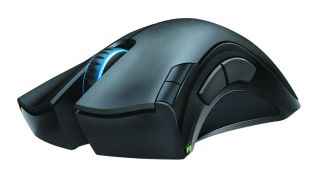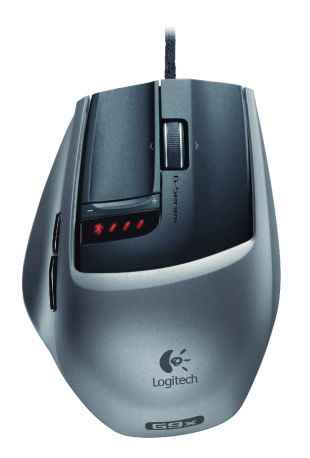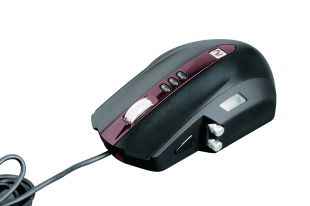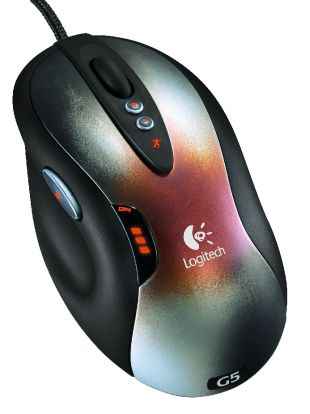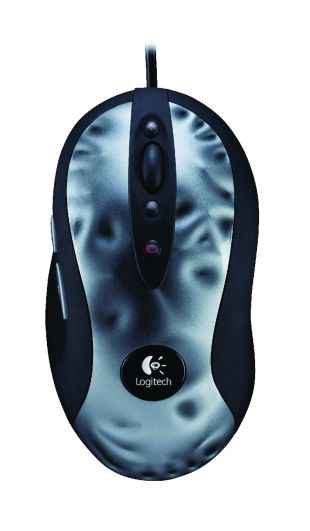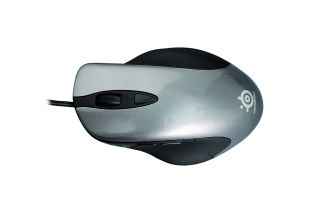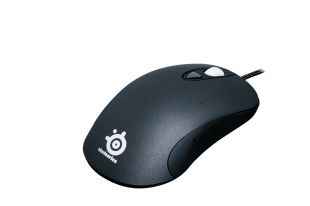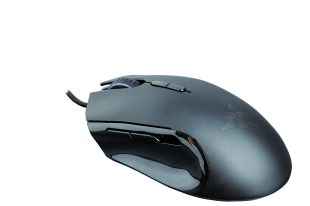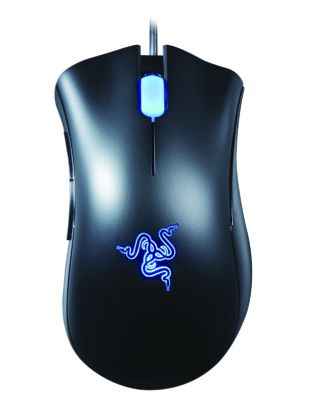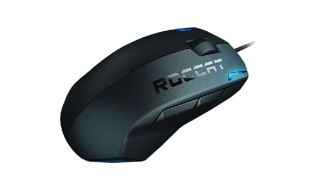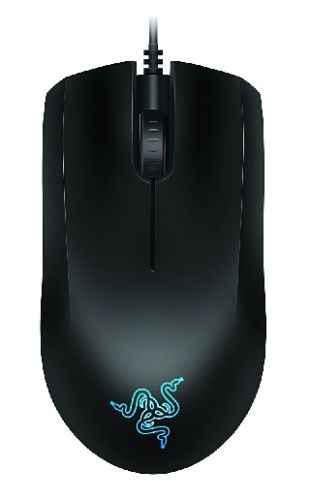Gaming peripheral test 2010: Mice

One of the fallacies we’d like to bust at this point is the hype that many brands dealing with gaming mice in particular create about the “DPI” rating. An acronym for “dots per inch”, one of the things the gaming peripherals industry has succeeded at is establishing the important of this specification, perhaps even grossly over-emphasising it. A brief explanation is in order – DPI is a measure of sensitivity. Quite simply, it’s a measure of how little you must physically move your mouse to move whatever object you are controlling on screen to a specific point. This could be as cursory an object as a file you want to select, or a running character you are trying to aim at with your reticule or HUD in a first person shooter like Crysis. The DPI number is the number of steps of movement that a mouse sensor will register when the mouse is moved physically by one inch. The higher the DPI rating, the faster the mouse will be perceived to be. But there’s a point beyond which mouse movement becomes too fast for the human perception to trace with any accuracy, rendering it useless. For example, a majority of gamers don’t use a sensitivity of more than 1,600 dpi, and many continue to use 800 dpi, therefore a mouse rated at 5,700 dpi is largely not doing much more for a gamer than say, a good 1,600 dpi mouse. Just remember – DPI isn’t everything.
Razer Mamba
The Mamba ships in a sexy box – transparent fibre with the mouse mounted on a pedestal. There’s a bunch of manuals that come in a cardboard box in individual tray-like compartments, sort of like a chest-of-drawers – premium clothes for the prince of Razer’s lineup.
While its serpent-like shape and gracefully smooth contours remind you of its namesake, the Mamba also has just enough sharp angles to keep it interesting. It’s designed for right-handed gamers and the grip is very comfortable for all but the largest hands. The surface has a Teflon coated finish, meant to resist sweat and enhance comfort. Both mouse buttons have gentle contours to fit fingers. The mousewheel is large and rubberised, but it’s very clicky – not a bad thing. The scroll on the mouse wheel has good feedback. The two buttons on the left are perfect for use with the thumb and they’re large enough to be very usable.
Advertised as wired and wireless, the Mamba ships with a Li-ion battery and a microUSB port on the mouse also accepts a neat cable. This is a plus for gamers who fear lag typically associated with wireless mice and the chance of battery losing charge. Incidentally, with the battery inserted, you can charge the mouse on the dock, or use the USB cable that charges the battery on the go. Powering it up, the Razer logo doesn’t glow, but the rims of the mouse wheel light up in blue. Without the Li-ion battery the mouse is light, the 800 mAh battery is pretty thick and gives the mouse a substantial, but not over-heavy, feel. The charging dock is cool looking and uses the same detachable mouse cable and the base lights up in a cool blue. When charging the entire set up looks pretty neat – and is worth its weight in drool value. The dpi modifying buttons are located on the top, next to the left click. The battery indicator also doubles as the dpi indicator and has a neat green/red LED colour coding for the same.
Acceleration is slower on the Titan mat owing to more grip that cloth exerts on the softer Teflon feet; on the whole, tracking on both surfaces is very good. The left/right buttons also have the right balance between travel and feedback. The feet give a lot more grip on the Destructor mat than the Logitech G9x, evidently, these were intended to be used together. In wireless mode, there is a very slight lag noticeable when quick movements are in order, and accuracy slips a notch, although if memory serves well, it’s on par with the Logitech G7. For gaming though, stick with the bundled USB cable.
Although a selling point is the wireless mode, that will attract gamers on the go, the bulky dock that must be connected to a computer in order to use the mouse on it, is just too big to be carted around. This is not a portable mouse, nor was it intended to be. At Rs. 7,999 (MRP) the Mamba is one helluva gaming tool – it looks amazing, is built well and works near perfectly, but still, for that much dough you’d go – “hmmm, can I get anything more?” The G9x with its side scroll and ratchet scroll would be better value, although the Mamba is slightly better for gamers, and a lot better looking, which is important to some people.
Logitech G9x
At first glance, without the grips, the G9x looks quite small, and although the uncomfortable-looking, angular design is surprisingly comfortable, the mouse looks suited for those with tiny hands. Two interchangeable grips in the box add handiness. These can be snap-fitted on to the mouse and giving the impression of body armour, adding bulk, (but not much weight), making the G9x a lot more comfortable. Both the grips are different, the black one, called the “Precision” grip has a matte finish that resists sweat and is much more compact with a much shallower scalloping on the left side for the thumb recess. The other grip called the “Wide Load” grip, is grey in colour, and slightly broader, with a deeper thumb recess and also adds a bit of height to the mouse with a higher top. Neither of the grips is ambidextrous (sorry lefties). Remove the grips and the rear of the mouse has a push-in, and slide-out tray for the customisable weights. Deeper in the environment-unfriendly packaging, we found a sturdy box with weights – there are eight pieces, four each of four and seven grams. The G9x can take up to four of these, in any combination, which means you can add a maximum of 28 grams of weight to the mouse.
Everything about the mouse breathes quality, although we found the mouse buttons to be more sensitive than the keys on the G5 and the MX518. Sans weights, the G9x feels very light, but not as weightless as the Microsoft Sidewinder. We got good results using the four-gram weights. The sensitivity button is a two-way type and located just below the left mouse key – it’s accessible, but not easy to accidently press. The sensitivity indicator is very visible. The two thumb buttons are located ergonomically and exude very good feedback. The mouse button click is a little hard, but the tilt wheel mechanism works perfectly because of this, and there are no false clicks. On the bottom of the mouse is the “micro gear” button. This toggle button allows switching between free scroll and ratchet scroll mode of the mouse wheel.
Tracking on both mousepads was very good, but on the Titan, with its cloth weave, the G9x tracks very accurately, with the right amount of grip. At a sensitivity of 2,000 dpi or so, on the Destructor, the G9x seems a little too light-handed. It is accurate for the most, but pinpoint precision takes a toss. The Mamba is (slightly) better behaved when used on the Destructor, although on the Titan, things even out between the two mice. We found both grips to be good while gaming, although the precision grip is perhaps the more accurate one for gaming, probably to the marginal reduction in centre of gravity, and the fact that due to its smaller size, you can retain a better grip on the mouse, as it fits the palm slightly more securely.
Rs. 6,295 is a lot of dough to shell out for a mouse – the G9x brings a lot of features to the table however, and is a very useful productivity tool courtesy its ratchet scroll and side scrolling. Still, gamers who want bling have a large hunk of plastic that is passable looking at best.
Microsoft Sidewinder X5
At first glance the X5 looks like it was modelled after the batmobile. It’s a mixture of curves and sharp angles, and when the twin lights that shine from recesses in the rear looks nice. The mouse feels much larger in hand than other mice, though is not uncomfortable for it. Quite the contrary, it feels substantial in-hand, although the slightly bulging rear can be felt in the centre of the palm, no matter how large your palm – this is something you’ll have to adjust to. The sides of the mouse feature sharp recesses, but your fingers won’t encounter these. There is a small LCD that displays the current dpi reading and a row of three buttons on the top, just behind the scroll wheel allow selecting between 400, 800 and 2,000 dpi. The visual indicator of the current dpi is a nice touch – kudos to Microsoft for including it, other mice have a series of LEDs that illuminate in sequence – this isn’t as intuitive. On the right side is the weight tray, it can hold up to three weights, and Microsoft provides six, three each of five and ten grams.
Surprisingly, the mouse doesn’t handle very differently without/with weights. The extra buttons on the left side look like two round metal protrusions but are actually very comfortable to use. Being vertically stacked, they’re actually (arguably) easier to use than the other horizontally stacked buttons. Your thumb is a little more comfortable when using these. Although large, the X5 is comfortable, and your right hand’s ring finger will sit comfortably in the groove on the right side of the mouse. The thumb recess is smaller, but comfortable. The feet, that are Teflon, are little more than small discs with pegs that insert into the body of the mouse. You get three sets of feet – white, black and grey.
The X5 is pretty accurate and tracks well on the Destructor, but the slightly harder feet mean that it’s better off being used on cloth-based surfaces. The Destructor’s surface feels a little abrasive for the X5, while on the Titan mat things are butter-smooth. Also on the substantial feeling of the mouse in-hand, gives a strange feeling of satisfaction, despite the slight bulge at the rear. Your fingers are completely stretched out on the mouse buttons and that feels pretty comfortable. At Rs. 3,184, the Sidewinder X5 is reasonably priced for the features it offers, although it’s not the last word in terms of pin point accuracy – ultimately it vies with the G5, whichever way you go – you won’t regret either.
Logitech G5
The new G5 features two thumb buttons instead of one, and has a matte finish on the body that is sweat and slip resistant. The G5 has a catchy design on the body and the mouse itself is very well contoured to fit right-handed people. In fact, the grip and shape is better than the G9/G9x, and the deep thumb recess is very comfortable. The only problem is that there is no contour for the right-hand ring finger and this finger will languish in the near vicinity of the right click. If you place your ring finger in the recess, your last finger will touch the mousepad surface.
The buttons have a very positive feedback. The thumb buttons are located ergonomically but this isn’t as good as the vertical stack on the Microsoft Sidewinder X5. There is a small backlit indicator for the current dpi setting. The scroll wheel has tilt functionality and this works perfectly, not once did we accidently click the mouse wheel while side scrolling. The G5 has the DPI change buttons beneath the scroll wheel, the MX518 had them in a one up, one down position. The G5 also misses the document flip button than the MX518 has – we wonder why Logitech digressed here.
Large feet give the G5 a very precise feel on nearly both our mats. The G5 feels right at home on the Destructor – and tracking is very accurate, at 800 dpi (which many gamers use), you will not notice a difference between this and the Logitech G9x or Razer Mamba. Due to the higher acceleration, initially one might feel the G5 to over track slightly, but once you get used to the extra glide, things settle down. On the Titan mat, the G5 feels accurate and precise, but with slightly less acceleration than on the Destructor, obviously the cloth on the Titan providing more purchase. The mouse has a nice weight that feels just right, a weight tray is provided with additional weights – the G5 allows finer tuning than the G9x, as the weights are 1.7 and 4.5 grams. Even fully loaded the G5 doesn’t feel very heavy.
With a plethora of features, some of which are useful to office users (like the side scroll), the G5 is a very good mouse and offers better precision and glide than the MX518 that has smaller feet. The price tag of Rs. 3,395 is surely not cheap, although experience tells it can be had for much lower on the street.
Logitech MX518
Is there any correct way to introduce a legend? If this isn’t apt, please forgive, but some five years ago, the original MX518 changed the Indian gamers’ perception of what a gaming mouse should be like. From a fraternity used to 400 dpi el-cheapo mice with tracking systems reminiscent of tortoises running on ice, we finally got, what was, back then, the holy grail of gaming – a useable, practical, accurate gaming mouse. The MX518 has paved the way for gaming mice in the country, and till today, it remains a competitive piece of gear, albeit overshadowing from some younger, better hardware-bearing competitors.
The surface is shiny, and from experience it wears well. The MX518 has a nice soft scroll wheel with a nice positive click. There’s no side scroll, one of it’s only glaring omissions. On account of this, the scroll wheel is slightly receded into the body of the mouse, whereas on the G5 it protrudes a bit more. The mouse buttons are comfortable.
The MX518 tracks very well on the Titan – accuracy is spot on. On the Destructor, we were expecting a mixed bag, since the MX518 has very small feet. However, if anything, the MX518 glides with even less impedance than the G5 on the Destructor’s surface. Accuracy goes up a notch too, since there is virtually no resistance to mouse movement, nor is it slippery enough to cause over tracking.
Priced at Rs. 1,795, and with market prices in the range of Rs. 1,300 or so, the MX518 is reasonably affordable for nearly anyone who has a decent computer. We’d call it “the gaming mouse of the masses” but even hardcore gamers will not be disappointed.
Steelseries Ikari
At first glance the Ikari is attractive and will grab attention due to its rather unique shape. The sides are muscular, the right side even more so, reminiscent of the wide wheel arches of the Bugatti Veyron. The sides are finished in matte, sweat resistant black and the top is a glossy steel grey. The mouse has a low profile, a welcome relief from Logitech’s higher designs, although neither feels better or worse, and one can get accustomed to either.
In-hand feel is very good, the Ikari is comfortable, although for larger handed folk the body might seem a little small, owing to the lower profile, and parts of your palm and fingertips might trail on the mat surface. The thumb recess is decent, not excessive. The brilliance however, lies on the other side. The huge bulge on the right is actually tailor-made for the ring finger and provides a comfortable expanse to rest it. Unlike the Logitech mice, where sometimes, the last finger touches the mousepad, there’s smooth sailing here. The DPI toggle button is on the top and well located, and there is a backlit indicator to the two dpi toggles. Mousewheel click is positive, but feedback is absent. The mouse buttons have a positive click, but button travel is minimal – this isn’t good or bad, just different – you just feel the click more on Logitech mice.
The Ikari tracks well on the Titan mat and is pretty accurate, but on the Destructor, we see a barely perceptible slower tracking, this causes a bit of under tracking, especially when fast tracking is desired, for example changing direction in a first person shooter game. At such times, one prefers the hairline greater accuracy of the G5 and other laser mice, we feel the surface of the destructor isn’t very conducive to the infrared sensor on the Ikari, though strangely the MX518 had no such issues. If you’re not into playing twitch-action games like Quake III Arena, you will hardly notice this issue. We didn’t perceive a problem when playing Warcraft 3, that is a lot slower, but also has a lot of mouse movements and accuracy is important for moving and selecting troops.
With an MRP of Rs. 2,999 the Ikari is clearly costlier than the MX518. It also feels better in-hand, and is more comfortable, and this coming from people used to Logitech mice is high praise indeed. If the thumb recess were a bit deeper, it’d be perfect, but for the price, you can get better hardware, for just a bit more.
Steelseries Kinzu
At first glance the Kinzu looks like what it is – a cheaper variant of the Ikari, aimed at the not-so-serious fragger. Although the shape isn’t very ergonomic it’s not uncomfortable, although we miss the finger caressing contours of the more upmarket mice. It’s also terribly small, and only slightly larger than a medium sized notebook mouse – not something many gamers will like, although we wonder if female gamers find regular mice too large; in such cases this might be right up their alley. The entire top has a nice anti-slip grip. The mouse feels very solid, but this is also in part, due to its smaller size.
The DPI switch button is on the top, and looks identical to the Ikari, but there’s no indicator. The mouse wheel is a simple, plastic affair, but its action is solid and the click is pretty positive. The left and right click on the mouse is better than the Ikari – more feedback and travel. The cable on the Kinzu is a lot thinner than the Ikari – as expected.
The Kinzu is very accurate, and in the day and age of 5,600 DPI sensors that, for some, are more about marketing hype and numbers rather than the actual experience, the Kinzu showed us that despite its light on-paper specifications, it had the guts to hang with the best…err costliest. On the Destructor, tracking is accurate, although mouse acceleration isn’t as good, and you’ll constantly feel in need of more speed when quickly panning. The feet also make a slight grating sound, although this isn’t as bad as the Sidewinder X5. But the Kinzu on the Titan, is even more accurate, although we found the Titan to be somewhat sticky at first. You need to use a marginally more muscle power to move the mouse. The feet on the Ikari offer much better glide.
Priced at Rs. 2,299, the Kinzu is expensive, more than what we’d be willing to shell out, especially when the Logitech MX518 is available for a lot less. It’s not something we’d recommend, the Ikari makes a better buy for Steelseries fans.
Razer Imperator
The imperator is a sexy customer. At first feel the Imperator seems to fit ones hand better than the Mamba, this is because the Mamba has more generous bulge near the thumb portion of your palm. In-hand, both feel equally comfortable, but with radically different shapes and thus, a different feel. The Imperator is a wired mouse, and well built. It has the more traditional Razer logo glowing on the palm rest, unlike the Mamba, where the bling was omitted to, no doubt, save battery life. Although it looks a lot smaller to the eye, the Imperator is a hairsbreadth smaller than the Mamba in-hand. But the difference is minimal. The thumb buttons are adjustable in that you can choose to physically shift them forward or backward using a switch on the bottom, this is to adjust their location to coincide with the pad of your thumb. These thumb buttons are clicky and harder than the butter-smooth buttons on the Mamba. They’re also smaller, although usability doesn’t suffer.
There is a scallop for your thumb, unlike the Mamba, and this feels a lot more comfortable and is essential, for the Imperator is a mouse that will need to integrate with your thumb to make up for the natural flare that the Mamba has at the rear to fit a larger palm. Overall, the Imperator is very comfortable, and our only qualm is the missing side scroll. Dare we dream for a ratchet mechanism to the scrolling, like Logitech has?
Tracking on the Destructor is perfect. The Imperator tracks smoothly and accurately with nary a hint of lag or over tracking. Acceleration is brutal, but controlled, and with no loss in accuracy if you suddenly decelerate. The Mamba in wired mode performs similarly. For some reason, the Mamba felt a little smoother gliding on the Destructor mat.
The Imperator is everything you wanted in a gaming mouse – it’s comfortable enough for a Sunday afternoon siesta, and sharp enough for the baddest frag-fest around. Yours for Rs. 3,999, a fair chunk of dough, for a fair hunk of a mouse…
Razer Deathadder
We received the left-handed version of the Deathadder, but we figure its performance would be indicative of the right-handed version too. The body shape is similar to the Mamba, and the shiny black sides match the matte black top well. The top has the same sweat-resistant finish that has become popular among gamers. The Teflon feet are grey coloured, unlike the other Razer mice that have black feet. They’re also slightly harder to feel. The mouse wheel is made of a translucent material and is lit probably with an embedded LED. While the cool blue colour looks good and matches the backlit, pulsing Razer logo on the top, we feel that this borders on being loud, and preferred the Mamba and Imperator – these only have two narrow strips of light on the edges of the mouse wheel.
Tracking with the Deathadder can be a handful. This is because there is no dpi adjusting except through software; the typical hardware on-the-fly buttons are missing. This is a minus to be sure, since the default speed is pretty high. The thumb buttons are large and ergonomically shaped but the location of the rear button is such that you’ll have to bend your thumb quite a bit to reach it; this is not comfortable. The body of the mouse is, however, very comfortable and has a good in-hand fit. Tracking on the Destructor mat isn’t smooth, this is because the Deathadder has the older type of harder Teflon feet that do not match with the Destructor’s harder surface. The Deathadder does much better on the softer, cloth-based surface of the Titan, it’s very accurate, and the Titan grips the feet well, allowing the mouse to exhibit a lot of control.
Roccat Kova
This is a mouse with radically different space-age looks. It’s angular, and the body silhouette looks more like a sports car than a mouse, but it’s not uncomfortable to hold. The Kova is built extremely well with solid plastics. Twin lights at the back pulse and change colour in sync with two narrow strips of light down the side of each mouse button. The Kova is a smaller mouse than most, and will be a tad uncomfortable for gamers with larger hands. There is a slight recess for your thumb but this isn’t a big deal and will not really help you rest your thumb or take some weight off your wrist. There’s an upside to this – the Kova is ambidextrous. The low design also takes a lot of strain off the wrist.
The thumb buttons add to the beauty of the design, and they’re large, therefore easier to use. The mouse buttons exude good feedback. The sides of the mouse have a surface that grips the hand well and resists sweat – a boon. The feet on the Kova feature the same soft-feel Teflon that the Razer mice have. Thanks to this, the Kova has a good balance of grip and slip, although its smaller size can occasionally cause it to behave less than optimally, however, this is something your hands need to adjust to, after using mice like the Mamba. Accuracy on Roccat’s own Sense mat was very good – great acceleration and a near-perfect mix of grip and slide. The Kova also tracks well on the Destructor, although it tends to slide just a bit more than we’d like it. We feel this is due to the initial resistance when moving the mouse that causes one to put a bit extra effort, once the mouse gets moving, it glides smoothly, almost too smoothly.
The Titan proved stickier, and we found that overtracking was less of a problem as the mouse glide was more controlled and acceleration was also reigned in. Priced at Rs. 4,250, we found the Kova a bit costly, we’re told that Roccat is a European company so the costs involved are higher. Regardless, the Kova is a very good mouse, but we feel Razer’s and Logitech’s designs are designed with a little more comfort in mind.
Razer Orochi
The Orochi has been designed to straddle an interesting divide – notebook users and gamers. After using it as both a gaming mouse and a notebook mouse we feel it’s equally suited to both roles, although the fact that it doesn’t go all the way in either direction is ultimately its biggest hurdle. The mouse is reasonably well built and suitably compact for notebook purposes. It does get heavy when populated by two AA batteries, but most will not mind, because this gives some much-needed stability. The body of the mouse slopes forward and from a raised rear. This is good because the raised portion fits your palm giving a slightly more substantial in-hand feeling. The mouse can be used wirelessly or with a USB cable that is also bundled. When powered by two AA batteries, the Orochi becomes heavy, but not uncomfortably so, actually the in-hand feel is nice.
Even though its small the mouse fits even medium-large hands well owing to its width and the raised rear. Being a Bluetooth mouse, you save a USB port. The wheel has a nice positive click, as do the buttons, a pity Razer didn’t add a tilt feature for the wheel that is invaluable for most users. Scrolling is very accurate gamers will not complain. The feet provide the right balance between slip and traction on good surfaces. On the Destructor the Orochi is very behaved, and mouse acceleration is good. The feet are larger than those on the Mamba and Imperator but made of the same soft-feel Teflon. There are four additional buttons on the mouse – two on the left, two on the right. The ones on the left are useful although not the most ergonomically located; the ones on the right are absolutely useless – and little more than decoration – using them is pretty difficult, especially if you’re gaming. Actually, the only reason the buttons are present on the left is that, the Orochi is intended to be ambidextrous – this will be of significance to left-handed gamers.
Overall hardcore gamers will look at bigger mice for better control, while notebook users might want something with more features, making the Orochi and expensive option, (Rs. 4,999), straddling two usage patterns.

